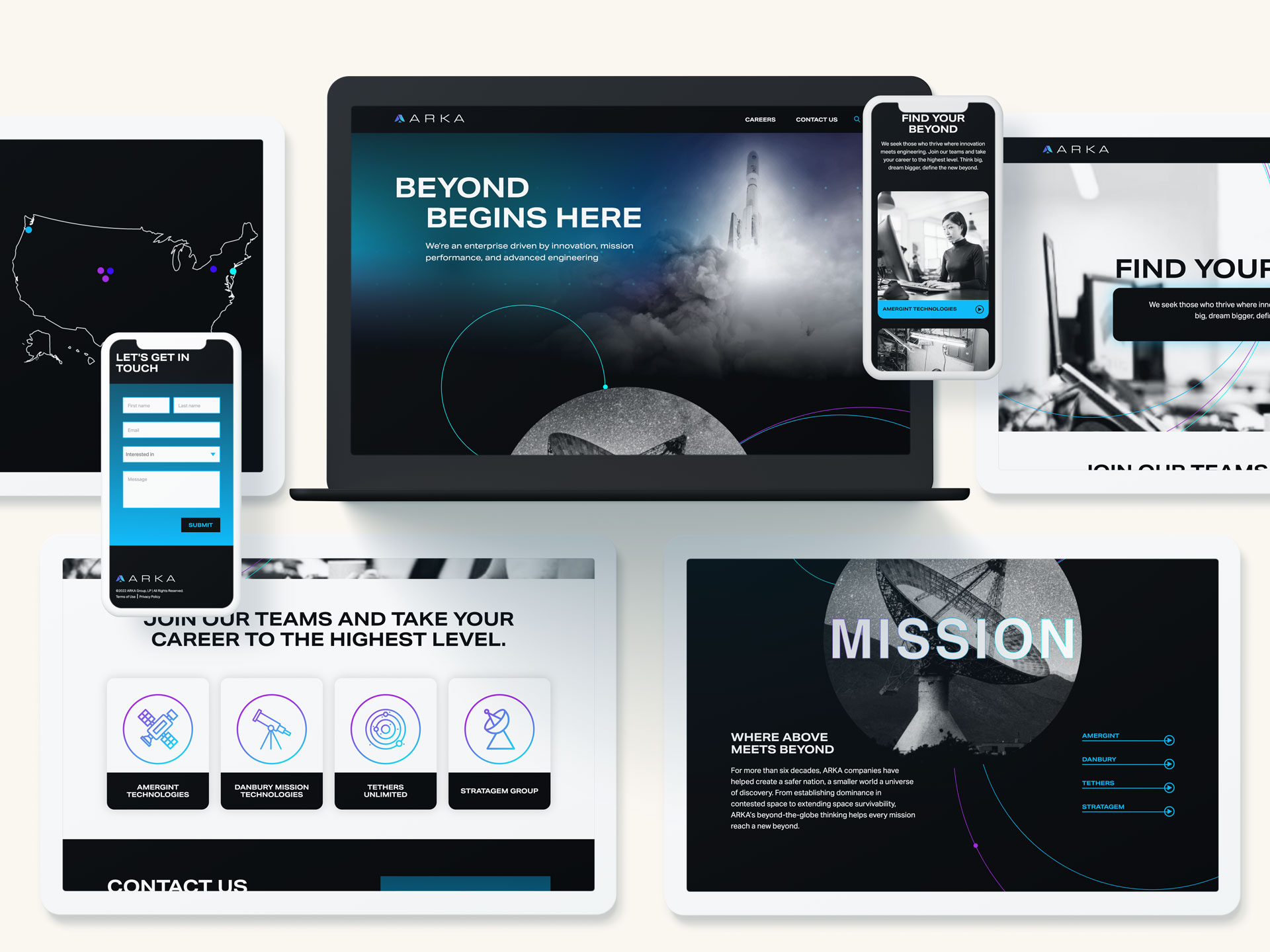When most marketers think of vertical video, they picture TikTok dances, viral consumer content, and Gen Z scrolling endlessly on their phones. But in 2025, vertical video is no longer just a consumer phenomenon. It’s emerging as one of the most effective tools in the B2B marketer’s toolkit—especially as more professionals consume content on mobile-first platforms like LinkedIn, YouTube Shorts, and Instagram Reels.
For B2B brands, this isn’t about chasing trends for the sake of novelty. Vertical video is about meeting audiences where they are, in the format they prefer, with stories that are designed to be consumed quickly and easily. If your business isn’t exploring vertical video yet, you’re leaving visibility, engagement, and credibility on the table.
Why Vertical Video Works for B2B Audiences
The argument for vertical video in B2B comes down to one simple truth: decision-makers are people, too. They use the same devices, engage on the same platforms, and are shaped by the same digital habits as consumer audiences.
- Mobile-first mindset. More than 80% of B2B buyers now research vendors on their mobile devices at some point in the buying journey. Vertical video feels natural in this environment, eliminating the need to rotate screens or resize windows.
- Higher engagement rates. Industry studies consistently show that vertical video generates higher completion rates and stronger engagement compared to horizontal formats, especially on platforms like LinkedIn and YouTube Shorts.
- Efficient storytelling. In a world where attention spans are shrinking, vertical video’s bite-sized storytelling makes it easy for professionals to get the information they need without sitting through a full webinar or whitepaper.
Vertical video isn’t about stripping away depth; it’s about presenting complex ideas in a format that meets audiences where they are.
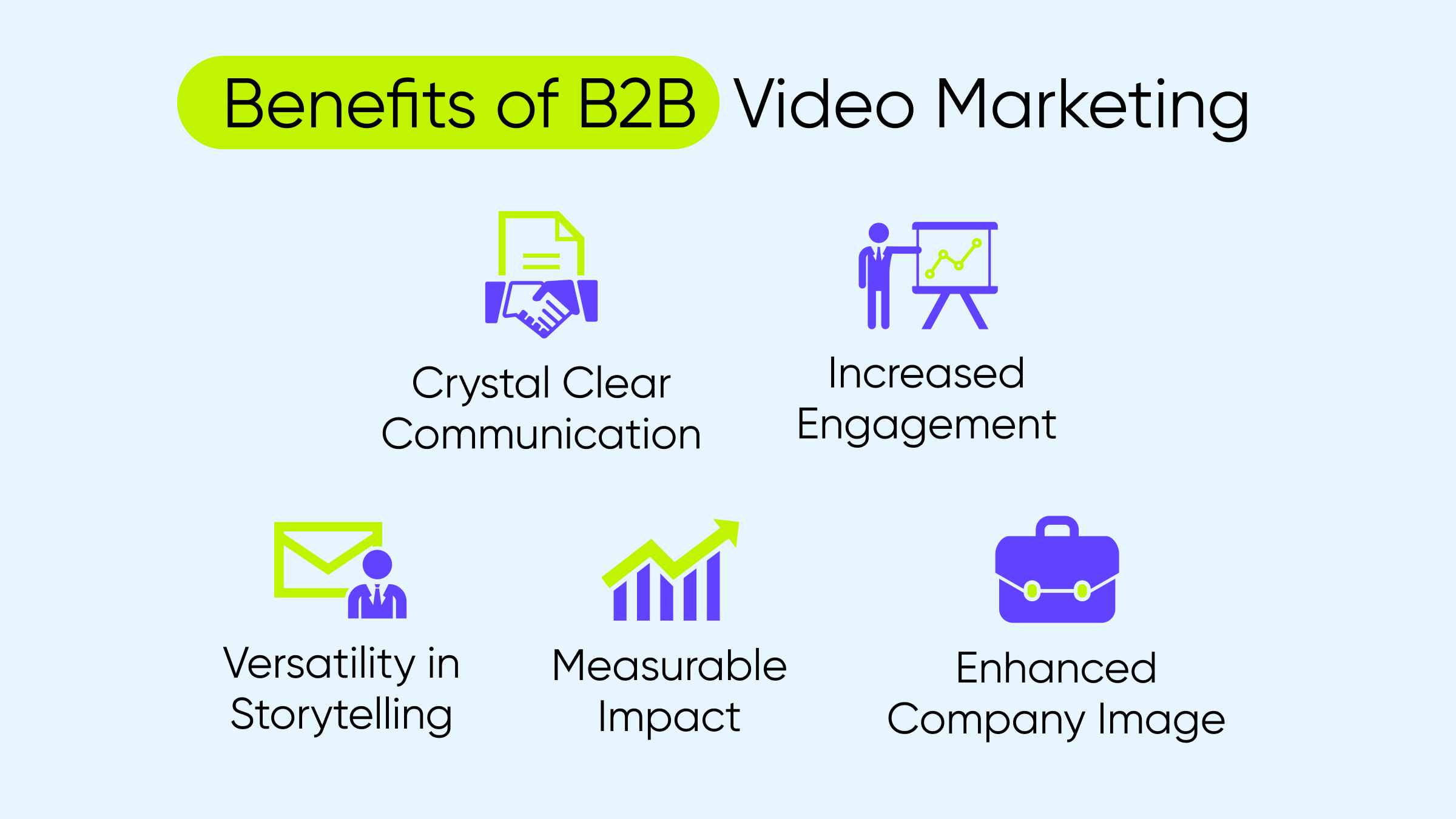
Beyond TikTok: Platforms Driving Vertical Video for B2B
TikTok may have pioneered vertical video at scale, but the format has since spread across every major digital channel—many of which are central to B2B marketing strategies.
- LinkedIn: The professional network has leaned heavily into video content, with native vertical videos appearing in feeds and ad placements. Companies use vertical clips to promote events, share thought leadership, and highlight product launches.
- YouTube Shorts: While YouTube is often associated with long-form content, Shorts has become a powerful discovery tool. For B2B, Shorts are ideal for micro-educational content, product teasers, or snippets from longer demos.
- Instagram Reels: Once considered strictly consumer-focused, Reels are now a growing space for B2B employer branding, culture marketing, and thought leadership—especially for firms targeting younger professionals.
- Conferences & webinars: Recorded panels, fireside chats, or training sessions can be repurposed into vertical clips that extend the life of in-person events.
The common thread across all of these platforms? Vertical video feels native, and content that feels native performs better.
How B2B Brands Are Using Vertical Video Effectively
The beauty of vertical video is its flexibility. Forward-thinking B2B brands are finding creative ways to adapt the format across the funnel:
- Customer testimonials: Instead of lengthy case studies, short vertical clips featuring customer soundbites offer authentic, shareable proof of value.
- Thought leadership snippets: Executives and subject matter experts can deliver quick insights in under 30 seconds—perfect for keeping a brand top of mind.
- Behind-the-scenes content: From office tours to day-in-the-life clips, vertical video humanizes even the most technical organizations.
- Product demos: Micro-demos show off specific features or benefits, giving buyers a taste of value before committing to longer content.
- Recruitment campaigns: Highlighting company culture through vertical video helps attract top talent, especially younger generations entering the workforce.
For example, SaaS brands Bluetext partners with have seen success by repurposing long-form demos into vertical cuts, which serve as both awareness drivers and conversion tools. By meeting prospects in their feeds with digestible video, they create more touchpoints without reinventing the wheel.
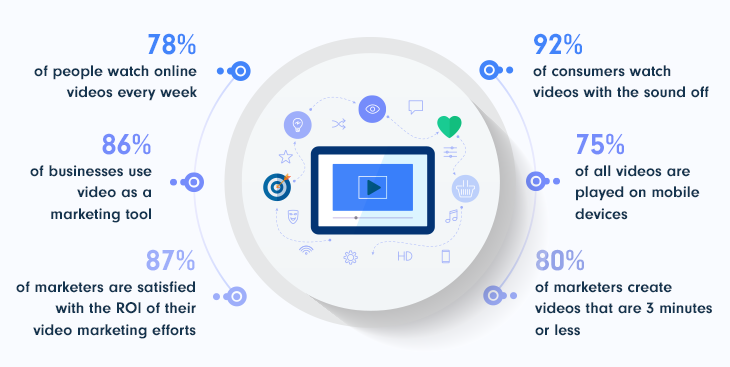
Best Practices for Vertical Video in B2B Marketing
Getting vertical video right requires more than just cropping existing footage. The most effective brands take a strategic approach:
- Keep it short. Aim for 15–60 seconds. Professionals are more likely to engage when content is quick to consume.
- Design for silent viewing. Up to 80% of social video is watched without sound. Adding captions ensures accessibility and improves engagement.
- Prioritize mobile-first storytelling. Use tight framing, bold visuals, and direct messaging that works on small screens.
- Repurpose long-form content. Don’t start from scratch—turn webinars, whitepapers, and conference presentations into vertical video highlights.
- Measure what matters. Track watch-through rates, engagement, and conversions, not just views. In B2B, quality of engagement beats quantity.
By applying these best practices, vertical video becomes not just another format, but a high-performing piece of an integrated B2B content strategy.
The Future of Vertical Video in B2B
Vertical video’s rise is not a passing trend—it’s a reflection of broader shifts in how professionals consume and share information. Looking ahead, several factors will make vertical video even more central to B2B marketing:
- Generational change. Younger decision-makers who grew up on mobile-first content are moving into leadership roles. Their expectations will shape how B2B brands communicate.
- AI-powered editing. Tools are making it easier to automatically repurpose long-form video into polished vertical snippets at scale.
- Omnichannel integration. Vertical video will no longer live solely on social—it will be embedded in websites, sales enablement platforms, and internal communications.
- Performance-based expectations. As vertical video becomes standard, stakeholders will expect measurable ROI, pushing marketers to refine their strategies even further.
In other words, vertical video is moving from “nice to have” to “must have.” The B2B brands that embrace it now will have a competitive advantage as audiences continue shifting toward mobile-first experiences.
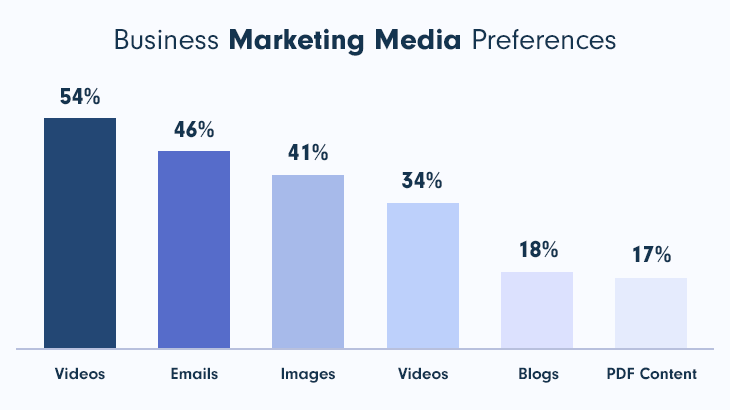
Vertical Video Is the New B2B Standard
Vertical video is not just a TikTok trend. It’s a fundamental shift in how information is shared and consumed across industries. From LinkedIn thought leadership clips to repurposed conference highlights, B2B brands that adopt vertical video are seeing stronger engagement, broader reach, and more meaningful connections with their audiences.
The question isn’t whether vertical video belongs in B2B marketing—it’s how quickly you can integrate it into your strategy.
At Bluetext, we help businesses build content strategies that resonate in the channels and formats that matter most. If you’re ready to explore how vertical video can elevate your B2B marketing, contact us today to start building your vertical-first strategy.
In the defense industry, where competition is fierce and stakes are high, effective marketing strategies are critical for contractors looking to differentiate their offerings. Success in the B2G space hinges on building trust, demonstrating value, and adapting to the complexities of government procurement.
The Challenges of Marketing in the Defense Industry
The defense industry operates in a highly regulated and specialized environment, posing unique challenges for marketers:
- Complex Buying Cycles: Decision-making in the defense sector involves long timelines and multiple stakeholders.
- Strict Regulatory Compliance: Marketing must adhere to strict regulations governing communications with government agencies.
- Highly Competitive Market: Contractors compete not only on technical capabilities but also on pricing, reliability, and reputation.
- Evolving Buyer Expectations: Government and military buyers increasingly seek innovative solutions that align with evolving strategic needs.
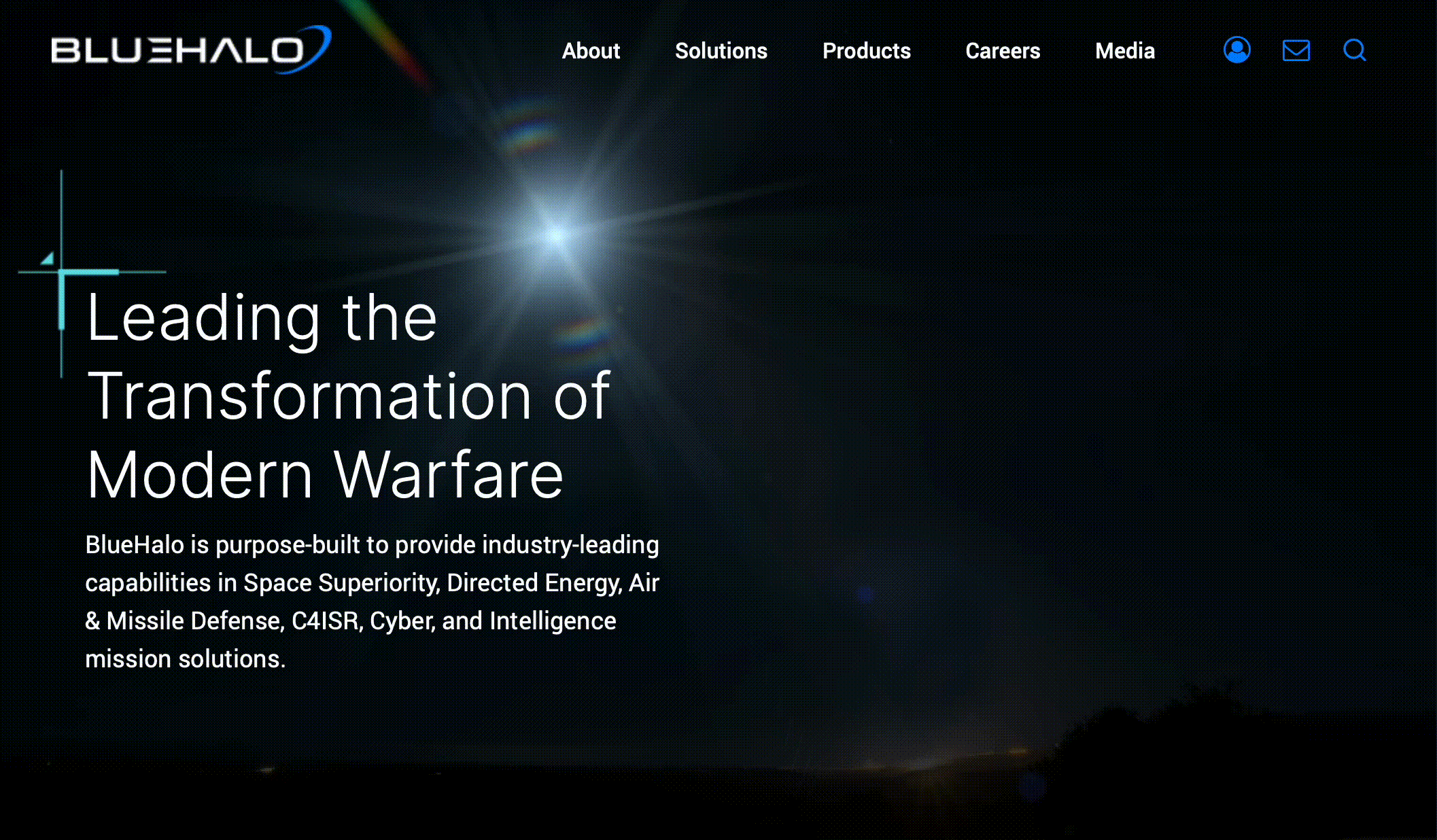
Strategies for Standing Out in the Defense Market
- Establish Thought Leadership
Positioning your company as a trusted expert is vital in the defense industry. Thought leadership builds credibility and demonstrates your firm’s ability to anticipate and address industry challenges.
How to Execute:
- Publish white papers, reports, and research that address pressing defense issues.
- Host webinars or participate in industry events to share expertise.
- Create content that demonstrates how your solutions align with national security priorities.
- Highlight Proven Performance
Buyers in the defense industry prioritize reliability and proven results. Sharing evidence of past successes builds confidence in your ability to deliver.
How to Execute:
- Develop case studies showcasing successful project outcomes.
- Incorporate testimonials from satisfied clients, emphasizing measurable results.
- Use video content to visually highlight key achievements.
- Emphasize Innovation and Adaptability
Innovation is a key differentiator in the defense industry, where agencies seek cutting-edge solutions to stay ahead of evolving threats. Demonstrating adaptability further reinforces your relevance in a dynamic environment.
How to Execute:
- Highlight research and development (R&D) investments in marketing materials.
- Showcase unique features of your solutions that set you apart from competitors.
- Address how your offerings evolve to meet emerging challenges.
- Tailor Messaging to Key Decision-Makers
Defense procurement involves a wide array of stakeholders, from technical evaluators to high-ranking officials. Tailored messaging ensures you address the priorities of each audience.
How to Execute:
- Segment messaging by roles, focusing on technical details for engineers and strategic value for executives.
- Use targeted email campaigns to reach specific decision-makers.
- Develop presentations and collateral that speak directly to each audience’s pain points.
- Leverage Digital Channels Strategically
While traditional methods like trade shows remain important, digital marketing plays an increasingly central role in reaching defense buyers.
How to Execute:
- Optimize your website for search terms relevant to defense procurement.
- Use social media to share thought leadership content and engage with industry conversations.
- Implement targeted digital advertising to reach procurement officials and influencers.
Measuring the Impact of Your Marketing Efforts
Given the long buying cycles in the defense sector, tracking success requires a mix of short- and long-term metrics. Key performance indicators (KPIs) include:
- Lead Generation: Track the number of qualified leads from marketing campaigns.
- Engagement Metrics: Monitor content downloads, webinar attendance, and website traffic.
- Pipeline Contribution: Measure the influence of marketing efforts on sales pipeline growth.
- Client Feedback: Collect qualitative feedback to refine messaging and strategy.
Final Thoughts: Differentiating in a Competitive Market
Standing out in the defense industry requires a multi-faceted approach that builds trust, highlights proven results, and adapts to the needs of a complex market. By investing in thought leadership, tailored messaging, and digital engagement, contractors can effectively position themselves as indispensable partners to government and military clients.
Partner with Bluetext for Defense Industry Marketing Expertise
At Bluetext, we specialize in helping defense contractors navigate the complexities of B2G marketing. From crafting compelling content to developing targeted campaigns, we’ll help you differentiate your brand and drive success in a competitive market. Contact us today to learn how we can elevate your marketing efforts.
Music is more than just a background element in advertising; it’s a powerful tool that can influence consumer behavior on a subconscious level. At Bluetext, we understand the intricate relationship between sound and emotion, and how the right music can elevate an ad campaign from memorable to unforgettable. In this blog post, we’ll explore how different genres, tempos, and melodies impact consumer emotions and drive actions.
The Power of Music in Advertising
Music has a unique ability to evoke emotions, memories, and even physical responses. Advertisers have long harnessed this power to create emotional connections with their audience. But how exactly does mucsic influence consumer behavior?
- Genres and Their Emotional Resonance:
- Different music genres carry distinct emotional connotations. For instance:
- Classical music is often associated with sophistication and luxury, making it ideal for high-end brands.
- Pop music conveys a sense of fun and energy, appealing to younger audiences.
- Rock music can evoke feelings of rebellion and freedom, aligning well with brands that target bold and adventurous consumers.
- Different music genres carry distinct emotional connotations. For instance:
- Selecting the right genre is crucial for aligning the ad’s message with the brand’s identity and the emotions advertisers want to evoke.
- Tempo: The Rhythm of Consumer Action
- The tempo of a song can significantly impact how an ad is perceived and how viewers react to it:
- Fast tempos can create a sense of urgency and excitement, encouraging quick decision-making. This is often used in ads for sales or limited-time offers.
- Slow tempos tend to relax the listener, making them more receptive to detailed messages or creating a sense of calm around the product being advertised.
- The tempo of a song can significantly impact how an ad is perceived and how viewers react to it:
- Understanding the psychological effects of tempo allows marketers to strategically time the delivery of key messages within an ad.
- Melodies that Stick: The Role of Earworms
- Certain melodies are more likely to become “earworms,” sticking in a listener’s mind long after the ad is over. These catchy tunes can reinforce brand recall and keep the product top of mind:
- Repetitive and simple melodies are easier for the brain to process and remember.
- Melodic hooks that tie into the brand’s message can create a lasting association between the product and the music.
- Certain melodies are more likely to become “earworms,” sticking in a listener’s mind long after the ad is over. These catchy tunes can reinforce brand recall and keep the product top of mind:
- An effective melody doesn’t just complement the visuals; it becomes part of the brand’s identity, contributing to long-term brand recognition.
Case Studies: Music’s Role in Iconic Ad Campaigns
To illustrate the impact of music on consumer behavior, let’s look at some iconic ad campaigns where music played a pivotal role:
- Apple’s iPod Silhouettes: The use of upbeat, catchy songs in Apple’s iPod commercials not only captured the energy of the product but also created a cultural phenomenon. The music choice was key in making these ads instantly recognizable and widely loved.
- Coca-Cola’s “Taste the Feeling”: Coca-Cola’s ad campaign used a pop anthem to evoke feelings of joy and connection. The music choice resonated globally, helping to reinforce the brand’s message of happiness and togetherness.
- Nike’s “Dream Crazy”: The inspiring soundtrack behind Nike’s “Dream Crazy” campaign amplified the emotional impact of the visuals and narration. The music’s rising intensity mirrored the journey of overcoming challenges, making the ad both powerful and motivational.
Crafting the Perfect Soundtrack
Music is a vital component of any ad campaign, capable of shaping how a message is received and remembered. At Bluetext, we believe that the right music choice can transform an ad from simply effective to truly impactful. By carefully selecting genres, tempos, and melodies that align with your brand and message, you can create a powerful emotional connection with your audience and drive consumer behavior in the desired direction.
Are you ready to elevate your next ad campaign with the perfect soundtrack? Contact Bluetext to start crafting ads that not only resonate but also deliver results.
If a picture’s worth a thousand words – a GIF is worth 24,000 per second. Almost any marketing study will agree that video content reigns supreme. So how do businesses tap into the power of video to better connect with their audience? An intriguing visual will get you part of the way, but if you can craft a story that resonates, compels, changes perception, or even brings wonder – that’s where the brand message really sinks in. Join us as we delve into the art and science of crafting impactful marketing video scripts that leave a lasting impression.
1. Define Your Goal and Audience
Before you jump into a storyline, character, or setting, it’s imperative to clearly outline the video objective and identify your target audience. Understanding who you’re speaking to and what you aim to achieve ensures that your message hits the mark and resonates with viewers.
Figure out the why. Why are you making this video? Is the video focused on a product? Explaining a pricing structure? Unveiling a new brand look? Is there a problem this video is trying to solve? Start with the basics.
Your marketing goal is the foundation of your video. It is a message you must convey to your audience early on in the video, because there is no guarantee that your audience will watch the entire thing. Clearly state the key message up front and repeat it at the end.
Note: When we say objective we don’t mean objectives plural. Trying to do too many things at once will result in doing none of them effectively. One video = one primary message.
2. Every Narrative Needs an Arc
At the heart of every successful marketing video, or any creative marketing medium, lies a captivating story. The before and after. The journey. Craft a narrative with an emotional arc to get the viewer interested and invested and keep them hooked until the end. A well-crafted story not only entertains, it leaves a lasting impression. Keep these tactics handy for your next script:
Show and/or Tell
Instead of explaining it, demonstrate it! Actions, expressions, and visual cues can often communicate more effectively than direct exposition. Say less, show more, let your audience do some work, and keep them immersed in the story.
Build Tension
Tension is the most powerful tool in storytelling. Going back to your objective – what is the frustration you are solving? Perception you are shifting? Challenge you are overcoming? Introduce conflict, misconception, or even mystery that keep viewers engaged in the story and invested in the outcome.
Use Metaphors
Metaphors can add depth to your brand or business and allow for the message to sink in. Invite the viewer to interpret the narrative on multiple levels, which then makes your video more memorable.
3. Seamless Integration of Call to Action
Ok, so they’ve watched your video until the end – now what? Assuming the message sunk in, what should they do about it right then, or a week or month later? Your goal in writing a video script is to convince the viewer to act. Tell the viewer exactly what to do and how doing it will benefit them. Whether it’s encouraging viewers to subscribe or visit your website (or ideally a designated video landing page) to make a purchase or contact a sales rep, a well-worded CTA drives viewer action without feeling pushy or sales-oriented.
Note: Keep it simple. Don’t ask them to like, follow, share, subscribe, pre-order, and also click through to the website all at once. One video = one primary message = one CTA.
4. Refine for Conciseness and Engagement
Crafting a compelling video marketing script requires more than stringing buzzwords together; it’s a meticulous process of refining to reach your distilled marketing message, back it up with enough evidence, make it captivating, deliver the CTA and do it all with brevity and an emotional arc. Every word intentionally serves a purpose, unwraps another layer to the story, or checks another audience pain point box. Reductive editing plays a pivotal role in this refinement, where each word is scrutinized, each sentence is balanced, and each idea is tested.
Pacing and rhythm are paramount; strategic pauses can wield immense power, whether to build anticipation, emphasize a point, or allow viewers to digest information. Write shorter sentences for urgency and longer ones for complexity, and give it plenty of room to breathe.
Remember – no script is complete until you (or ideally someone else) has read it out loud. Does it sound like web copy or a narrative? Nobody talks like we write, but your script needs to be a conversation. Pretend you are the voice-over artist and really embrace that brand tone! This not only helps the flow of your script, but it ensures it’s adhering to your time limit. Evaluate every element of your script from the perspective of your audience or objective to bring harmony and focus that your viewer will thank you for.
5. Get Feedback
Don’t underestimate the power of collaboration. Seek feedback and the unbiased opinions of those on your team not involved in the video. Bring diverse experiences and ideas to the table to not only enrich the creative process but to ensure a well-rounded final product.
Looking to create your next dynamic and engaging video? Contact Us.
The average American is exposed to around 4,000-10,000 ads every day. We have adapted by scrolling past the ‘noise’ that is of no personal interest to us. Modern brands feel the repercussions of the oversaturated market, finding it hard to stand out and capture viewers’ attention. They are faced with questions like how do we appeal to individual users? How do we connect with our audience? For a time, linear videos that had a clear beginning, middle, and end were effective ways to learn more about a brand and its values. However, many of these brands are faced with the reality that the linear videos once produced, simply aren’t having the same impact they once did.
Enter: Interactive videos. Interactive videos allow the viewer to interact with content that lives within the video itself. Think quizzes, clickable buttons, polls, and even games that prompt the user to interact with the ad. An Interactive video is non-linear, often referred to as a branching video or a “choose your own adventure” video. The viewer is able to determine the direction of the video’s narrative based on their personal interests.
The magic behind interactive videos is how the story is told. It is dynamic and flexible, but still simple and communicates a clear message. This makes it user-friendly and impactful. It also drives high engagement and high retention rates because the user is able to get the information they need in a story they are invested in. Viewers are no longer passive observers but rather active participants, who in turn have a better chance of remembering and connecting with the message.
Think about the popular Black Mirror episode Bandersnatch, as the viewer is taken through the film they are faced with a series of choices at key moments in the film that change the course of the film based on what they are interested in seeing.
This interactive film allowed the viewer to create a highly personalized and engaging experience for themselves, and in turn, they felt more invested in the outcome of the storyline. Now imagine taking these same properties to evolve your brand and generate higher engagement and increased loyalty toward your brand.
Interactive videos can be a highly effective tool for increasing brand awareness. By allowing viewers to make choices within the video, companies can create a more personalized experience for potential customers, with the ability to create multiple narrative paths within a single video. This can lead to increased engagement and conversion rates, as viewers are more likely to watch the video multiple times and for longer periods of time in order to explore all of the possible outcomes.
Interactive videos can be used to enhance product demos, training, educational content, and internal communication. With the right strategy and resource investment, interactive videos can be a powerful tool for businesses of all sizes and industries. It keeps employees engaged and further aids in building a strong brand foundation that gets both employees and customers excited to be involved.
By giving viewers the power to choose their own adventure, interactive videos have the potential to revolutionize the way we consume and interact with video content. If you are interested in learning more about how Bluetext’s video production services can help you create an unforgettable video ad, contact us.
The competitive landscape for capturing visitor attention through digital experiences is crowded and overwhelming to say the least. Not only do you need to grab visitors’ attention, but also present thoughtful UX design that guides them to a desired action and outcome. So how do you accomplish this when it seems like everyone else wants the same thing?
Creative differentiation is a key first step in grabbing the attention of your audience and unique interactivity throughout the user journey can be the extra step that keeps visitors present and engaged in your site content. At the end of the day, a website is a tool for presenting information – so why not do it in the most unique and engaging way that you can? This is where 3D interactive design comes in. With the limitless content possibilities available to us all, thoughtful and creative 3D design with helpful elements of interactivity can elevate your website’s content and UX to a memorable and effective experience resulting in conversions and lead generation.
Check out Bluetext’s work for Aeyon’s go-to-market campaign leveraging custom 3d animation throughout the page scroll experience!
Immersive design is a balance – it should have the coveted wow factor but also should achieve practical benchmarks like accessibility, effective communication of information, and an intuitive user journey. The implementation of 3D interactive design should follow best practices to ensure that site visitors are delighted and not overwhelmed by the UX – more is not always more. For example, the use of complex 3D layering and visual effects on every component of your homepage would create a visual overkill and also harm the practicality of the page when it comes to loading times, page speed, and site performance metrics. On the other hand, having an eye-catching 3D hero with engaging hover states is enough to entice the visitor to continue on the site where they can find other elegant 3D applications of the visual brand.
There is a multitude of 3D design styles that can be applied to a brand through web design, each with its own capacity to tell the brand story. Layering and masking can create depth in design while allowing the intermixing of imagery and brand shapes.
The use of illustration can also be used in 3D design to emphasize the real objects seen in brand imagery, it can also be used in a brand that wants to convey simplicity while avoiding the use of generic stock images.
Typography can even be brought to life with 3D shadowing and interactive states!
In addition to the possibilities for 3D design elements, there is endless opportunity to create unique interactivity within those elements. Things like hover states, scroll transitions, the reveal of content on hover, interactive graphics and more can elevate an already elegant 3D design application. It is crucial to remember, though, that each of these elements should be chosen carefully to reflect the ultimate goal of the page whether that is a form completion, subscription sign-up, resource download, or simply continued site engagement.
Want to learn more about how 3D interactive design can elevate your brand? Contact Bluetext to learn about our 3D design services!
We’ve all experienced the infamous ‘Blaring Ad’ before. It strikes at the most inconvenient of times—one second you’re peacefully (and silently) scrolling through your phone, only to be interrupted by the ear-splitting sound of a video advertisement playing at full volume. What is it for? What do they have to say? It doesn’t matter. None of these questions so much as cross your mind before you shut it off (angrily) in one quick click. You don’t even take the time to consider the marketer’s message, as you’re either jarred by the sound or embarrassed to be the source of a sudden outburst in public.
The rise of silent video and closed captioning is occurring rapidly; we are seeing more and more videos that not only utilize subtitles but also do not require any audio to fully understand the premise and/or story of the ad. Data from Facebook demonstrates exactly why you might want to tone it down on the audio in your ads—approximately 80% of people will react negatively to a mobile ad that plays out loud as they’re scrolling. Rather than spending money on an ad that users will quickly click out of, you could be creating a compelling ad that can be watched in (peaceful) silence.
It’s time to say goodbye to the Blaring Ad, and hello to a silent video.
Three Tips on How to Create a Compelling Silent Video
1. Nail the First Three Seconds
Research has shown that when someone comes across a video, whether they are going to stick around and watch it or not is typically decided within the first three seconds. After that, they’re either in or they’re out. This means that the first three seconds of your video needs to have an interesting hook to keep your audience interested. There should be a great visual that draws people in without necessarily needing them to hear anything. The bottom line is that we as humans remember pictures better than words, and that’s a fact.
2. Utilize Closed Captioning
Captioning your videos is a no-brainer—it will increase viewer engagement, improve SEO, and most importantly, it will make your video more accessible. Video captioning ensures that viewers can comprehend any auditory cues and dialogue in your video, making it accessible for persons who are deaf, hard of hearing, or non-English speakers. Closed captioning can also boost brand memorability and awareness. According to research conducted by eMarkterer, subtitles increased average video viewing by 40%. Videos with subtitles led to a 91% completion rate compared to 66% when viewed without subtitles.
Closed captioning is also a great move when it comes to Search Engine Optimization. Your SEO efforts will benefit from captioned videos because it will be easier for viewers to find the content online. Videos, unlike articles and other text-based content, can easily get lost in the complex algorithms of search engines, unless they contain searchable captions that push the video to the top of a Google search.
3. Pick the Right Platform
When it comes to picking where your silent video will be advertised, social media is going to be your best friend. YouTube, Snapchat, and many other social network sites are moving gradually to a captioning system. Videos with captions are frequently associated with accessibility in the social media sphere since the majority of these websites will automatically mute their videos. In a study, Facebook reported that users will watch videos without sound in almost 85% of all cases. Because of this, it is even more crucial for content producers to think about using video captions or subtitles to keep and attract viewers.
In short, Overall viewing will rise as a result of using closed captions in video marketing, and the advertised brand or product may even become more popular. Don’t pass up the chance to add words to your ads and instantly make them readable to everybody for a fraction of the price of the video itself. If you are interested in learning more about how Bluetext’s video production services can help you create an unforgettable silent ad, contact us.
Kingston Technology is the leading global manufacturer of memory and storage solutions, but their IronKey hardware-encrypted portable data storage products were not as well known. Bluetext was specifically contracted to create a campaign that could educate the industry about the benefits of hardware encryption compared to software-encrypted, unencrypted, and cloud-based solutions. Centered around the specific hardware-based encryption, our campaign asks the rhetorical question of does anyone want their security to be ‘soft’?
The obvious answer being no, Bluetext focused the campaign concept around “Hard vs. Soft” things. Bluetext was challenged to figure out how to bring “soft” to life via 3D design. But how to memorably visualize this metaphor? A deep brainstorm by the Bluetext surfaced a quirky and nostalgic example almost anyone could relate to: Jello.
Behind the Scenes: Jiggly 3D Animation
Communicating the look and feel of Jello with its jiggly physical properties was a real technical challenge. Using Cinema 4D’s built-in Jiggle Deformer and Fracturing Objects, adding a little bit of smoothing and rendering with the built-in RedShift render engine in Cinema4D, we were able to get the look we were going for.
Jiggle Bells, Jiggle Bells
Does jiggling jello even make a noise?! We asked ourself this very question every day. We even made some jello (lime of course) and tested it out just to be sure. The answer is – not really. But that’s beside the point.
Sound design was a pivotal component of our concept. Essentially, didn’t want it to seem like the hard drive was exposing or stealing sensitive information. Also, with the international scale of this campaign (7 languages!), we couldn’t use a voiceover.
It was up to our sound designer to clarify the story of “jello safe, bad. IronKey, good.” Using a mix of digital, mechanical, tactile, and dystopian sound effects, our audio narrative both negatively reinforces software encryption and then victoriously reinforces how hardware encryption can save the day.
Designing the jello splatter portion? Let’s just say we spent some time in the “Gore” section of our sound library. I think our designer is still having some PTSD, but the end result goes hard, that’s for sure.
With 3D animation to support Kingston’s IronKey product, the campaign set out to break the mold of traditional cybersecurity campaigns. If you’re looking for some creative ways to shake up your campaign advertising strategy, contact Bluetext to learn about our video and creative services.
There’s a reason why TikTok is the fastest growing app in America, and it’s not because of the lip-syncing teens or the viral dance moves. Users are drawn to TikTok for one primary reason: they love video. So much so that brands and companies recognize the power of audiovisual advertising opportunities and pump out more video content than ever before. But looking just beyond social media trends, video marketing remains highly effective across all platforms. In 2021, a study by Lemonlight found that 98% of marketers agreed that video would play an essential role in the upcoming years. In a media environment where consumers are constantly being bombarded by new information, it is absolutely vital that companies garner attention and engagement. One of the most effective means of capturing attention is through video marketing. Not only has video been shown to drive more engagement than any other type of marketing, but it can also be a powerful way to humanize your brand. Using eye-catching visuals, voiceovers, and music can translate your brand’s story and mission in a concise and memorable way. Producing video content may seem daunting, so here are a few key pointers to help break it down.
Different Types of Video Marketing
Commercials
The most common kind of video you can produce is oftentimes referred to as a “spot”, and it entails any kind of advertisement that airs at a specific time. Businesses choose where and when they want their advertisement to appear, and the content can vary depending on the brand or product being marketed. Since spots are typically less than a minute long, brevity is the name of the game. The key here is to immediately engage your audience and get to the meat of your message within the first couple of seconds.
Social Media
Videos for social media include anything that would be made and posted on a company’s organic social media account, or promoted through paid media placement. For organic social profiles, video content is often leveraged through temporary or traditional posts, while paid media promotion can target social media users with inline video ads based on profile data or website cookies. The content can vary, but the main focus for organic placement is to increase brand awareness and grow a social following. Putting some ad spend behind your video content offers more precise audience targeting, and offers opportunities for direct calls to action such as “Learn More” or “Sign Up”. Nevertheless, organic and paid social videos are typically short, with the exception of content for YouTube or Facebook, which is better suited for longer content.
Company Culture
The primary goal of this type of video is to help show off your company’s personality. These videos are an effective means to build trust between the company and its target audience, whether that be potential customers or prospective employees, by emphasizing core values and missions. These can include interviews with team members, clips of the office or events, or anything at all that shows what makes working at your company unique.
Product Demonstration
With a demo video, you have the opportunity to show off your brand and your products while teaching people how to use them. These are usually a bit longer and more detailed than the other video types mentioned, however, they should still grab the viewers’ attention. Product demonstration videos typically feature a charismatic host that speaks passionately about the product, but animated videos are effective as well.
Getting Started with Making Video Content
Okay, so now you know a few different types of video marketing, but where do you start? Although there are plenty of online sources for learning how to create amazing content on your own, it can be helpful to invest in a video marketing agency. This powerful method of marketing is not going anywhere anytime soon, so if you are interested in increasing user engagement, brand awareness, and conversions contact Bluetext about our video production services.
When we talk about motion in branding, we’re talking about a wide variety of creative approaches. From subtle homepage loading flourishes to complex, eye-catching 3D advertisements, animation can breathe new life into your brand. Today Bluetext will explore why motion design for logos is on the rise, when it’s best applied, and some of our favorite examples.
The digital landscape is crowded, to say the least. The average American spends a little over seven hours a day on the internet, and much of that time is spent surrounded by thousands of brands and advertisements. A well-done animation can help your brand stand out from the crowd and add essential layers of personality to your marketing collateral.
Whether your brand is neat and polished or playful and young, animation can reinforce those core characteristics without a single word. Picture the old Nickelodeon “splat” logo, for example. In 2009, a handful of disparate channels (TeenNick, Nick at Nite, etc.) were rolled into the Nickelodeon brand, and a new logo was unveiled to go along with the consolidation. The older logo’s animation had a younger, scrappier feel, while the current logo is much more refined, and gets at the large-scale, premium approach of Nickelodeon’s parent company, Paramount. These approaches are vastly different from one another, but there’s not one “right” answer when it comes to logo motion. Both animation styles are integral parts of the brand’s history and tell the story of a brand’s evolution. I’ve said it before and I’ll say it again: If a picture is worth a thousand words, an animation is worth a million.

Virtually any digital platform is an option when it comes to displaying an animated logo, but as they say, moderation is key. Instead of applying motion “just because,” it’s important to have intention behind the choice to display a static or animated logo. Here are a few of our favorite intentional applications of motion design in logos.
Use an animated logo when your space and time are limited
In cases where viewers may only see one or two components of an ad (scrolling quickly through a social feed, for example), you can convey more with an animated logo than you can with a static one. The key in these instances is to take up about the same amount of space and time as a static logo. This means your animation should be quick and to the point, like the example below from Nike. An added feature of Nike’s animation style is that they apply a different animation style depending on the audience and product, so each motion graphic feels uniquely suited to its context.
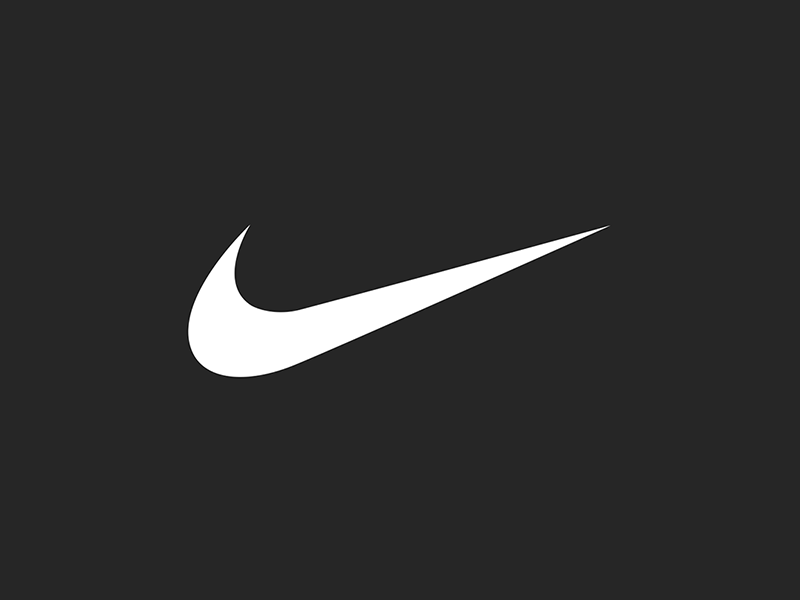
Amp up your site’s intro screen with logo motion
Along with the now-iconic “ta-dum” sound, Netflix’s loading visual is well-known and well-loved. Because the animation doubles as a loading screen, it doesn’t feel intrusive or overdone. It’s reminiscent of classic film grain, and it ensures that the Netflix visual identity is central to the viewer experience, regardless of whether the program is a Netflix original or not.
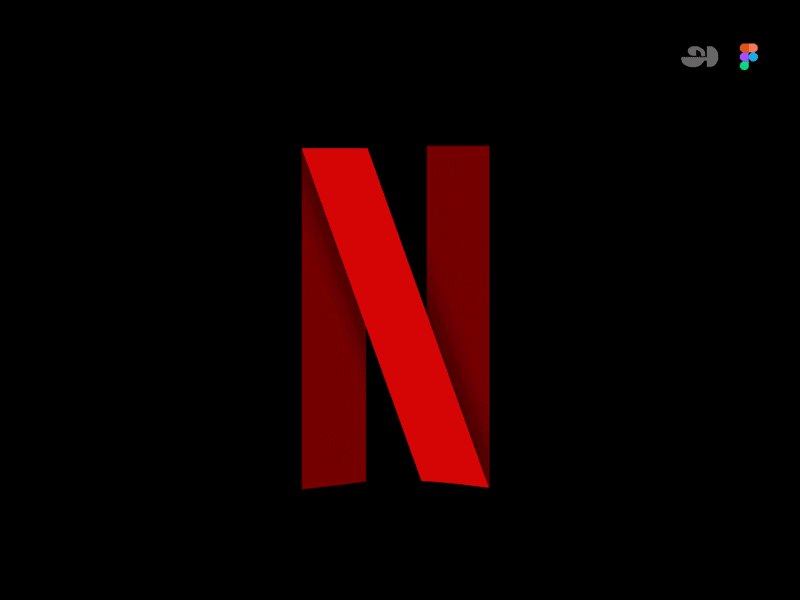
Animate your logo as part of a brand pattern
For Calling All Optimists, a GMAC brand, we developed an animated brand pattern using elements pulled directly from the brand’s logo. This is a handy asset in any brand’s toolbox, because it’s a custom element that can be used in place of stock imagery or generic graphics, and it can be front-and-center or fade into the background. You can explore our case study for Calling All Optimists here.
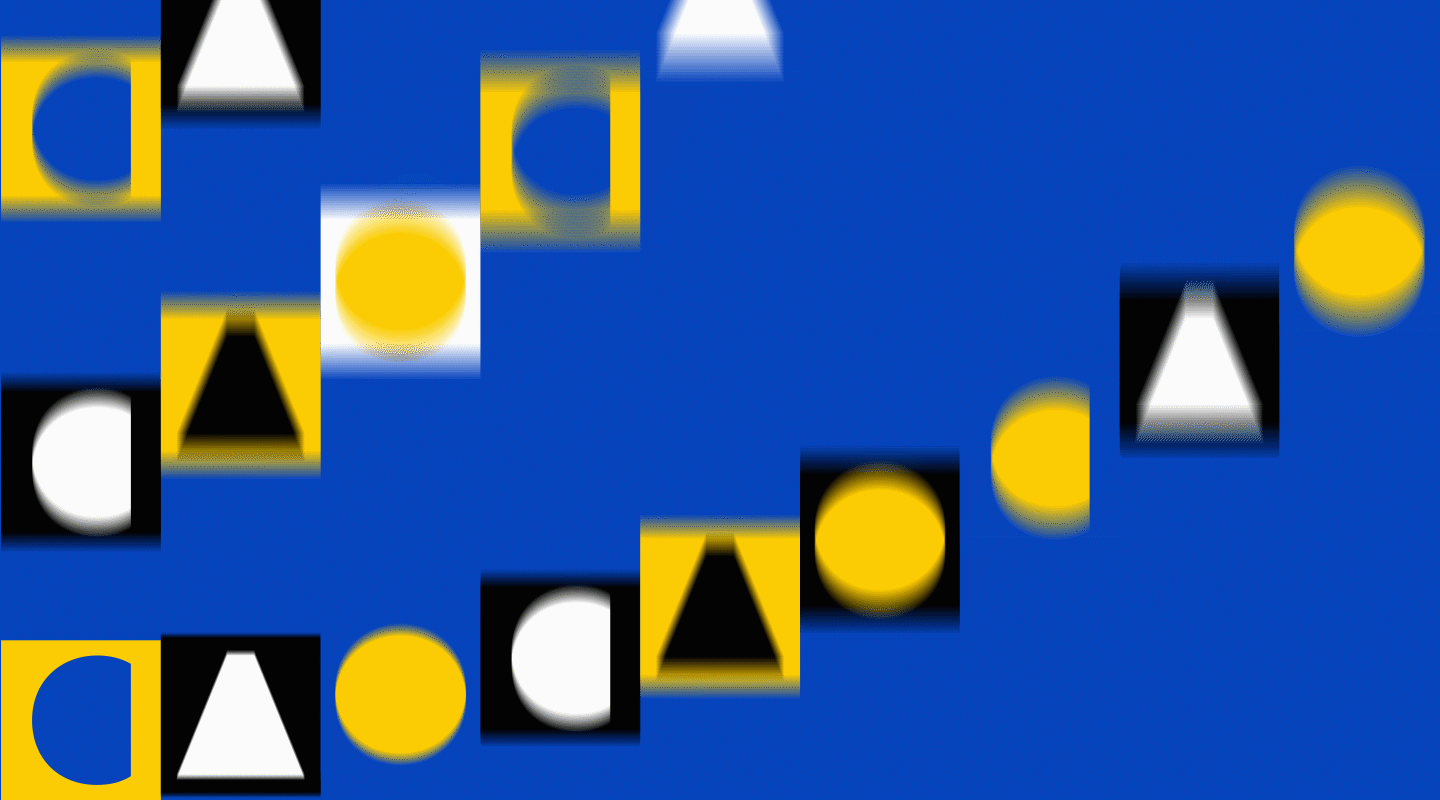
Tell a story about your brand using animation
Designtorget is a Swedish design house that sells all kinds of homewares, and their logo animation helps convey their line of business to unfamiliar customers. Using the “D” and “T” figures from their logo, shifting them around with other simple lines to portray things like a table and chairs and an abstract smiling person. This animation demonstrates the brand’s actual offerings while also presenting a playful, modern brand identity.
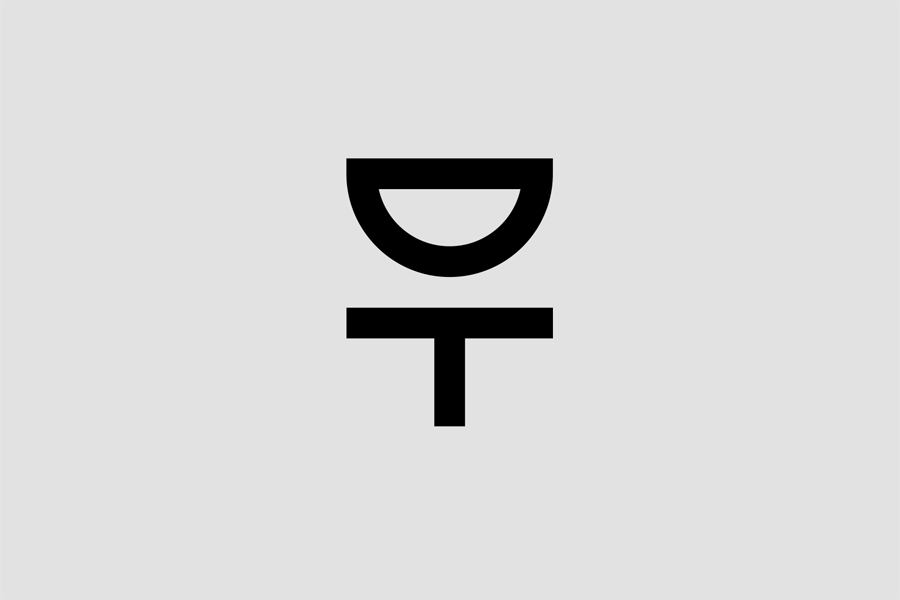 Ready to explore how logo motion can boost your brand? Contact Bluetext to learn about our dynamic branding and motion design services.
Ready to explore how logo motion can boost your brand? Contact Bluetext to learn about our dynamic branding and motion design services.
